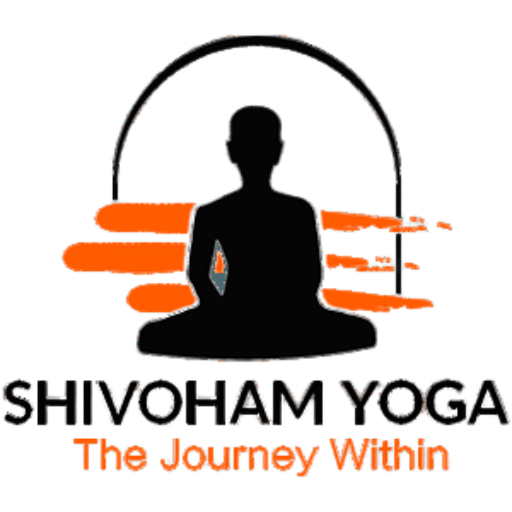Yoga Breathing techniques
What is Yogic Breathing techniques?
As children we are taught how to walk, talk, eat but nobody has every taught us how to breath correctly, by learning how to breath correctly one can deal with stress in a much more safe manner and this will also impact our overall health by calming the mind, soothing the nervous system and making the mind more alert and sharp. The yogic philosophy explains very well the different types of breathing and the most important muscle in the breathing process is the diaphragm. Movement of the diaphragm signifies that the lower lobes of the lungs are being utilized. The proper use of the diaphragm causes equal expansion of the alveoli, improves lymphatic drainage from basal parts of the lungs, massages the liver, stomach, intestines and other organs that lie immediately beneath it, exerts a positive effect on the cardiac functions and coronary supply, and improves oxygenation of the blood and circulation.
What is NATURAL BREATHING?
This is a simple technique which introduces practitioners to their own respiratory system and breathing patterns. It is very relaxing and may be practised at any time. Awareness of the breathing process is itself sufficient to slow down the respiratory rate and establish a more relaxed rhythm.
Natural breathing Sit in a comfortable meditation posture or lie in shavasana and relax the whole body. Observe the natural and spontaneous breathing process. Develop total awareness of the rhythmic flow of the breath. Feel the breath flowing in and out of the nose. Do not control the breath in any way. Notice that the breath is cool as it enters the nostrils and warm as it flows out. Observe this with the attitude of a detached witness. Feel the breath flowing in and out at the back of the mouth above the throat. Bring the awareness down to the region of the throat and feel the breath flowing in the throat. Bring the awareness down to the region of the chest and feel the breath flowing in the trachea and bronchial tubes. Next, feel the breath flowing in the lungs. Be aware of the lungs expanding and relaxing. Shift the attention to the ribcage and observe the expansion and relaxation of this area. Bring the awareness down to the abdomen. Feel the abdomen move upward on inhalation and downward on exhalation. Finally, become aware of the whole breathing process from the nostrils to the abdomen and continue observing it for some time. Bring the awareness back to observing the physical body as one unit and open the eyes.
What is ABDOMINAL BREATHING?
Abdominal or diaphragmatic breathing is practised by enhancing the action of the diaphragm and minimizing the action of the ribcage. The diaphragm is a domed sheet of muscle that separates the lungs from the abdominal cavity and, when functioning correctly, promotes the most efficient type of breathing. It is the effect of the diaphragm rather than the diaphragm itself that is experienced as the stomach rises and falls, but sensitivity will come with practice. During inhalation the diaphragm moves downward, pushing the abdominal contents downward and outward. During exhalation the diaphragm moves upward and the abdominal contents move inward. Movement of the diaphragm signifies that the lower lobes of the lungs are being utilized. The proper use of the diaphragm causes equal expansion of the alveoli, improves lymphatic drainage from basal parts of the lungs, massages the liver, stomach, intestines and other organs that lie immediately beneath it, exerts a positive effect on the cardiac functions and coronary supply, and improves oxygenation of the blood and circulation. Abdominal breathing is the most natural and efficient way to breathe. However, due to tension, poor posture, restrictive clothing and lack of training, it is often forgotten. Once this technique again becomes a part of daily life and correct breathing is restored, there will be a great improvement in the state of physical and mental well-being.
Abdominal (or diaphragmatic) breathing Lie in shavasana and relax the whole body. Place the right hand on the abdomen just above the navel and the left hand over the centre of the chest. Observe the spontaneous breath without controlling it in any way. Let it be absolutely natural. To practise abdominal breathing, feel as though you are drawing the energy and breath in and out directly through the navel. The right hand will move up with inhalation and down with exhalation. The left hand remains almost still. Let the abdomen relax. Do not try to force the movement In any way. Do not expand the chest or move the shoulders. Feel the abdomen expanding and contracting. Continue breathing slowly and deeply.
Inhale while expanding the abdomen as much as is comfortable, without expanding the ribcage. At the end of the inhalation, the diaphragm will be compressing the abdomen and the navel will be at its highest point. On exhalation, the diaphragm moves upward and the abdomen moves downward. At the end of the exhalation, the abdomen will be contracted and the navel compressed towards the spine. Continue for a few minutes. Relax any effort and once again watch the spontaneous breathing pattern. Bring the awareness back to observing the physical body as a whole. Be aware of the surroundings and gently open the eyes.

What is THORACIC BREATHING?
Thoracic breathing utilizes the middle lobes of the lungs by expanding and contracting the ribcage. It expends more energy than abdominal breathing for the same quantity of air exchange. It is often associated with physical exercise and exertion, as well as stress and tension; when combined with abdominal breathing, it helps the body to obtain more oxygen. However, the tendency in many people is to continue this type of breathing instead of abdominal breathing long after the stressful situation has passed, creating bad breathing habits and continued tension.
Thoracic breathing Sit in a meditation posture or lie in shavasana and relax the whole body. Maintain unbroken awareness of the natural breath for some time, concentrating on the sides of the chest. Discontinue any further use of the diaphragm and begin to inhale by slowly expanding the ribcage. Feel the movement of the individual ribs outward and upward, and be aware of this expansion drawing air into the lungs. Expand the chest as much as possible. Exhale by relaxing the chest muscles. Feel the ribcage contracting and forcing the air out of the lungs. Breathe slowly and deeply through the chest with total awareness. Do not use the diaphragm. Continue thoracic breathing for a few minutes, pausing slightly after each inhalation and exhalation. Relax any effort and once again watch the spontaneous breathing pattern. Bring the awareness back to observing the physical body as a whole. Be aware of the surroundings and gently open the eyes.
What is CLAVICULAR BREATHING?
Clavicular breathing is the final stage of total ribcage expansion. It occurs after the thoracic inhalation has been completed. In order to absorb a little more air into the lungs, the upper ribs and the collar bone are pulled upwards by the muscles of the neck, throat and sternum. This requires maximum expansion on inhalation and only the upper lobes of the lungs are ventilated. In daily life, clavicular breathing is only used under conditions of extreme physical exertion and when experiencing obstructive airway diseases such as asthma ..
Clavicular breathing Lie in shavasana and relax the whole body. Maintain unbroken awareness of the natural breath for some time, concentrating on the sides of the chest. Perform thoracic breathing for a few minutes. Inhale, fully expanding the ribcage. When the ribs are fully expanded, inhale a little more until expansion is felt in the upper portion of the lungs around the base of the neck. The shoulders and collar bone should also move up slightly. This will take some effort. Exhale slowly, first releasing the lower neck and upper chest, then relaxing the rest of the ribcage back to its starting position. Continue for a few more breaths, observing the effect of this type of breathing. Relax any effort and once again watch the spontaneous breathing pattern. Bring the awareness back to observing the physical body as a whole. Be aware of the surroundings and gently open the eyes.
What is YOGIC BREATHING?
Yogic breathing combines the previous three techniques. It is used to maximize inhalation and exhalation. Its purpose is to gain control of the breath, correct poor breathing habits and increase oxygen intake. It may be practised at any time and is especially useful in situations of high stress or anger for calming the nerves. However, while its inclusion in a daily yoga program will correct and deepen natural breathing patterns, yogic breathing itself should not be performed continually.
Yogic breathing Sit in a meditation posture or lie in shavasana and relax the whole body. Inhale slowly and deeply, allowing the abdomen to expand fully. Try to breathe so slowly that little or no sound of the breath can be heard. Feel the air reaching into the bottom of the lungs. At the end of abdominal expansion, start to expand the chest outward and upward. When the ribs are fully expanded, inhale a little more until expansion is felt in the upper portion of the lungs around the base of the neck. The shoulders and collar bone should also move up slightly. Some tension will be felt in the neck muscles. The rest of the body should be relaxed. Feel the air filling the upper lobes of the lungs. This completes one inhalation. The whole process should be one continuous movement, each phase of breathing merging into the next without any obvious transition point. There should be no jerks or unnecessary strain. The breathing should be like the swell of the sea. Now start to exhale.
First, relax the lower neck and upper chest, then allow the chest to contract downward and then inward. Next, allow the diaphragm to push upward and toward the chest. Without straining, try to empty the lungs as much as possible by drawing or pulling the abdominal wall as near as possible to the spine. The entire n1ovement should be harmonious and flowing. Hold the breath for a few seconds at the end of exhalation. This completes one round of yogic breathing. At first perform 5 to 10 rounds and slowly increase to 10 minutes daily. Relax any etlort and once again watch the spontaneous breathing pattern. Bring the awareness back to observing the physical body as a whole. Be aware of the surroundings and gently open the eyes. Practice note: The main requirement in pranayama is that respiration be con1fortable and relaxed. Consequently, once awareness and control of the breathing process has been established, the clavicular technique is dropped and yogic breathing is modified to become a combination of abdominal and thoracic breathing. The breath should flow naturally and not be forced.
More Yoga Links:
✔ 200 hour yoga teacher training in goa,India
✔ 200 hour yoga teacher training in Rishikesh,India
✔ 100 hour yoga teacher training in Rishikesh,India
✔ 100 hour yoga teacher training in goa,India
✔ 100 hour yoga teacher training in goa,India
✔ Ashtanga teacher training in goa,India
✔ Vinyasa yoga teacher training in goa,India
✔ 100 hour yoga teacher training in Rishikesh,India
✔ yoga teacher training in Goa,India

